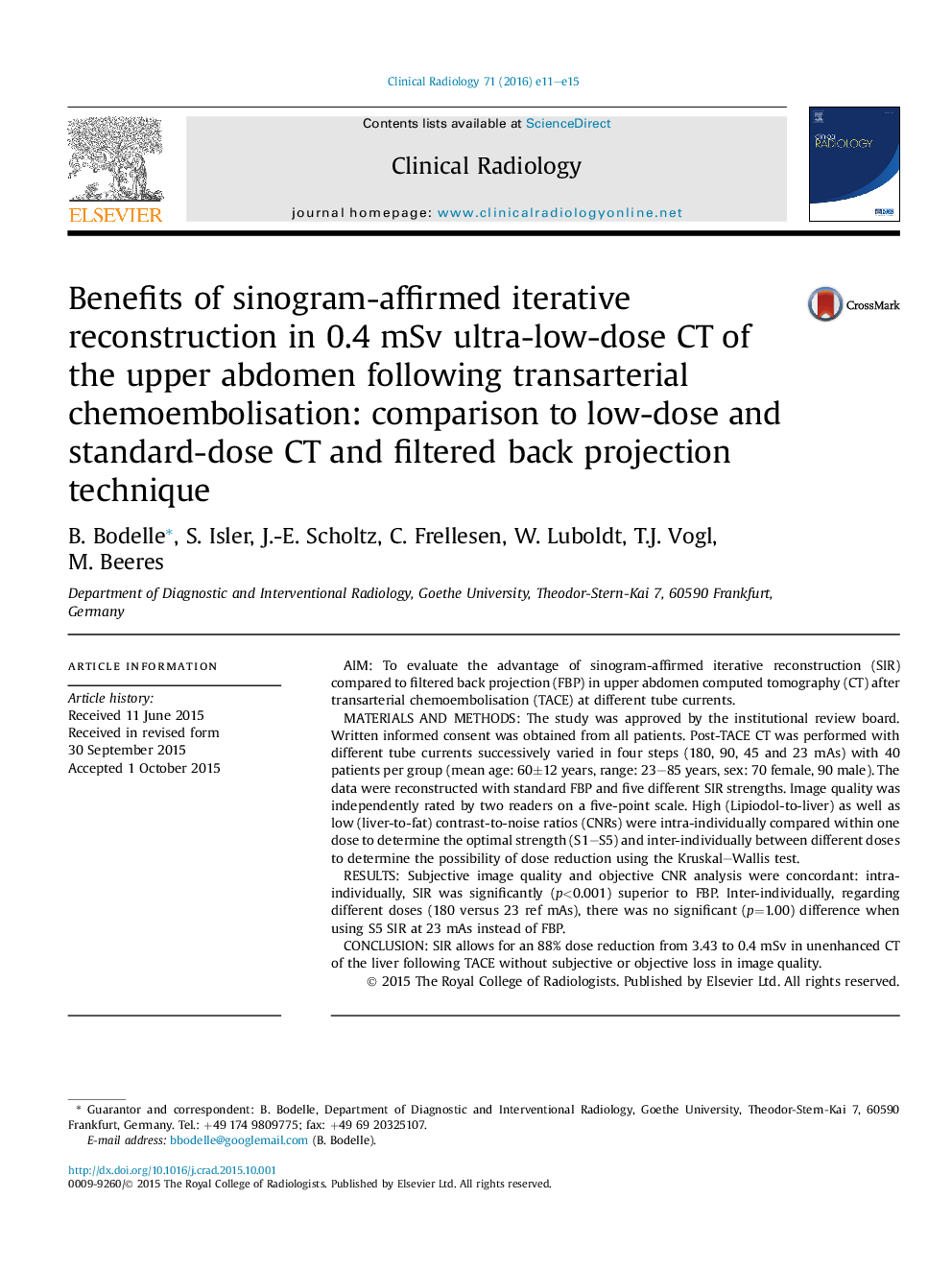| Article ID | Journal | Published Year | Pages | File Type |
|---|---|---|---|---|
| 3981438 | Clinical Radiology | 2016 | 5 Pages |
•Diagnostic image quality and radiation dose of ultra-low-dose CT of the upper abdomen using sinogram affirmed iterative reconstruction following transarterial chemoembolization in comparison to low-dose and standard dose CT and filtered back projection technique.•Ultra-low dose CT of the upper abdomen using sinogram affirmed iterative reconstruction allows for significant dose reduction by 88%.•Ultra-low dose CT of the upper abdomen using sinogram affirmed iterative reconstruction shows no losses in subjective and objective image quality.•Ultra-low dose CT using sinogram affirmed iterative reconstruction could be beneficial for patients with repetitive treatments.
AimTo evaluate the advantage of sinogram-affirmed iterative reconstruction (SIR) compared to filtered back projection (FBP) in upper abdomen computed tomography (CT) after transarterial chemoembolisation (TACE) at different tube currents.Materials and methodsThe study was approved by the institutional review board. Written informed consent was obtained from all patients. Post-TACE CT was performed with different tube currents successively varied in four steps (180, 90, 45 and 23 mAs) with 40 patients per group (mean age: 60±12 years, range: 23–85 years, sex: 70 female, 90 male). The data were reconstructed with standard FBP and five different SIR strengths. Image quality was independently rated by two readers on a five-point scale. High (Lipiodol-to-liver) as well as low (liver-to-fat) contrast-to-noise ratios (CNRs) were intra-individually compared within one dose to determine the optimal strength (S1–S5) and inter-individually between different doses to determine the possibility of dose reduction using the Kruskal–Wallis test.ResultsSubjective image quality and objective CNR analysis were concordant: intra-individually, SIR was significantly (p<0.001) superior to FBP. Inter-individually, regarding different doses (180 versus 23 ref mAs), there was no significant (p=1.00) difference when using S5 SIR at 23 mAs instead of FBP.ConclusionSIR allows for an 88% dose reduction from 3.43 to 0.4 mSv in unenhanced CT of the liver following TACE without subjective or objective loss in image quality.
